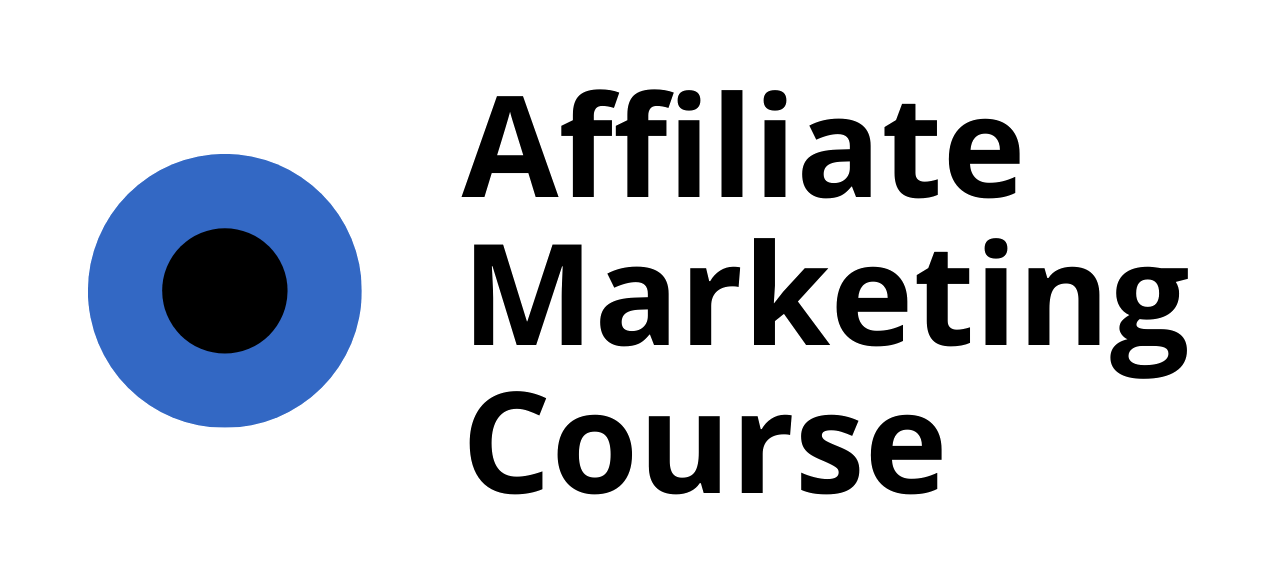Achieving affiliate marketing success without the traditional requirement of a blog has become increasingly popular, offering a cost-effective and flexible approach for individuals seeking to monetize their efforts. While many assume a blog is essential for affiliate marketing, platforms like Pinterest present a unique opportunity to leverage visual storytelling and organic engagement. This article explores how to harness the power of Pinterest for affiliate marketing without the need for a blog, revealing strategies to potentially earn $100 a day or more. Whether you’re new to affiliate marketing or looking to expand your current tactics, this guide provides actionable insights and real-world examples to help you unlock your full potential. From optimizing affiliate links and building sustainable income streams to understanding traffic dynamics and leveraging social proof, we’ll cover everything you need to know to thrive in the world of affiliate marketing without the constraints of traditional blogging.
Key Takeaways
– Leverage Visual Platforms Like Pinterest: Drive targeted traffic and maximize affiliate earnings by utilizing the power of visual social media platforms.
– Affiliate Marketing on Pinterest Can Generate $100+ Daily: Create engaging pinning strategies to promote affiliate offers effectively.
– Diversify Your Approach: Combine social media, email marketing, affiliate networks, and content creation across platforms like YouTube and audio platforms.
– Focus on Niche Expertise: Build trust and credibility by specializing in a specific area or product category.
– Optimize for Mobile: Ensure your affiliate links and content are mobile-friendly to engage with on-the-go users.
– Track and Refine Strategies: Use analytics tools to monitor performance and adjust your affiliate marketing efforts for better results.
– Build Relationships and Provide Value: Engage with your audience through meaningful interactions and deliver content that resonates with their interests.
– Stay Compliant and Transparent: Always disclose affiliate relationships and follow FTC guidelines to maintain trust with your audience.
– Avoid Common Pitfalls: Choose a clear niche, create engaging content, expand your reach, and address conversion rate issues to overcome challenges.

Yes, You Can Do Affiliate Marketing Without Blogging
Affiliate marketing doesn’t necessarily require a blog. Here are several alternative methods to get started:
- YouTube Channel : Create a YouTube channel focused on a niche you’re passionate about. Share product reviews, tutorials, or how-to guides, and include affiliate links in video descriptions or annotations.
- Email Marketing : Build an email list by offering valuable content or discounts. Send newsletters with affiliate links to your subscribers, providing them with useful recommendations and promotions.
- Social Media Platforms : Use platforms like Instagram, Pinterest, or TikTok to showcase products visually. Curate images or videos demonstrating product benefits and include affiliate links in captions or bios.
- Simple Website : Set up a basic website or landing page to host affiliate links. This allows you to control content presentation and track conversions effectively.
- : Start a podcast discussing your niche. Include affiliate links in show notes or transcripts, providing listeners with recommendations based on your discussions.
- Online Communities : Engage in forums or discussion boards related to your niche. Share insights and subtly promote affiliate offers, building trust and credibility over time.
Each method leverages different platforms and content types, allowing you to find the approach that best fits your skills and audience preferences.
Can You Make $100 a Day with Affiliate Marketing?
Yes, it is possible to earn $100 a day through affiliate marketing with consistent effort and the right strategies. Below are proven methods to achieve this goal:
1. Understand the Basics of Affiliate Marketing
Affiliate marketing involves promoting products or services and earning a commission for each sale made through your unique referral link. To succeed, you need to choose the right affiliate programs, drive targeted traffic, and convert that traffic into sales.
2. Key Strategies to Earn $100 Daily
a. Build a Strong Traffic Source
- Social Media Platforms : Promote affiliate links on platforms like Instagram, Pinterest, and TikTok where visual content performs well.
- Email Marketing : Build an email list and send regular newsletters with affiliate offers.
- Content Creation : Create valuable content around trending topics in your niche to attract organic traffic.
b. Choose the Right Affiliate Programs
- High-Commission Programs : Look for affiliate networks offering competitive commissions, such as Amazon Associates, ClickBank, and ShareASale.
- Niche-Specific Programs : Join programs tailored to your audience’s interests to maximize conversion rates.
c. Optimize Your Landing Pages
- Clear Call-to-Actions : Use persuasive CTAs like “Get Started Now” or “Shop Today.”
- Trust Signals : Include trust badges and reviews to build credibility.
- Mobile Optimization : Ensure your landing pages are mobile-friendly since many users shop on their phones.
d. Leverage Social Proof
- Customer Testimonials : Showcase real customer reviews and success stories to build trust.
- Influencer Partnerships : Collaborate with influencers in your niche to reach a broader audience.
e. Use Paid Advertising
- Google Ads : Target high-intent keywords to drive traffic to your affiliate links.
- Facebook Ads : Create targeted campaigns based on demographics and interests.
f. Stay Updated with Trends
- SEO Best Practices : Optimize your content for search engines to increase visibility.
- Trending Topics : Align your content with current trends to capture attention.
3. Tools and Resources
- Affiliate Marketing Courses : Take courses like AffiliateMarketingCourse.biz to master the skills.
- Analytics Tools : Track your performance with tools like Google Analytics and SEMrush to identify areas for improvement.
By combining these strategies and continuously refining your approach, you can consistently earn $100 a day or more through affiliate marketing.

Do I Really Need a Website for Affiliate Marketing?
While it’s technically possible to engage in affiliate marketing without a website, owning a website offers numerous advantages that can enhance your efforts and provide long-term benefits.
Advantages of Having a Website
- Control and Visibility: A website acts as a centralized hub, allowing you to control your content and reach a broader audience beyond social media platforms.
- Branding Consistency: You can create a cohesive brand image, making it easier for audiences to recognize and trust your promotions.
- Email List Building: Websites enable you to collect email subscribers, fostering valuable connections for future marketing efforts and promotions.
- SEO Potential: A website optimizes for search engines, increasing your visibility and attracting organic traffic.
- Monetization Options: Websites offer diverse revenue streams, including ads, sponsorships, and affiliate commissions, compared to the limited options on social media.
- Scalability: As your affiliate marketing grows, a website efficiently handles increased traffic and expands your affiliate network.
Considerations Without a Website
- Limited Reach: Dependency on third-party platforms may restrict your visibility and promotional capabilities.
- Brand Control: Limited control over content presentation and brand consistency due to platform restrictions.
- Lead Generation Challenges: Difficulties in capturing and retaining email lists for ongoing engagement.
Conclusion
Although affiliate marketing can commence without a website, investing in one provides enhanced control, scalability, and long-term growth opportunities. The initial costs and learning curve are outweighed by the benefits of a dedicated online presence.

Is It Possible to Be Successful as an Affiliate Marketer Without a Website?
Yes, it is absolutely possible to succeed as an affiliate marketer without owning a website. While having a website can provide a platform to showcase your products, connect with audiences, and build a long-term presence, there are several effective strategies you can employ to launch and grow your affiliate marketing career without one.
Alternative Strategies for Affiliate Marketing Without a Website
- Leverage Social Media Platforms
Social media platforms like Instagram, Pinterest, TikTok, and YouTube allow you to reach a vast audience and promote affiliate offers. By creating engaging content, sharing product reviews, and incorporating affiliate links, you can drive traffic and earn commissions. Platforms like Instagram and Pinterest are particularly visual and can be highly effective for showcasing products. - Email Marketing
Building an email list is a powerful way to engage with your audience and promote affiliate offers. By sending targeted emails with links to affiliate products, you can consistently earn commissions. Email marketing allows you to nurture relationships with potential customers and provide valuable content that keeps them interested in your recommendations. - Participate in Affiliate Networks
Joining affiliate networks like Amazon Associates, ShareASale, and ClickBank gives you access to a variety of products and affiliate programs. These networks often have tools and resources that can help you find affiliate links and track your earnings without needing a website. Simply share your unique affiliate links through social media, email, or referral programs. - Collaborate with Influencers
Partnering with influencers or bloggers who already have an established audience can help you promote affiliate offers. By working with influencers in your niche, you can tap into their audience and increase your visibility without needing a website. Make sure to negotiate deals that allow you to include your affiliate links in their content. - Create Content on Third-Party Platforms
Platforms like YouTube, Vimeo, and audio platforms like Apple Podcasts or Spotify allow you to host video and audio content. By creating valuable content around products and including affiliate links in your descriptions or shownotes, you can attract viewers and earn commissions. Video content is particularly engaging and can help you reach a broader audience. - Use Paid Advertising
Running paid ads on platforms like Google Ads, Facebook, and Instagram can be a quick way to drive traffic to affiliate links. While this requires budget, it can be a highly effective method for generating immediate leads and commissions. Ensure your ad copy is compelling and clearly highlights the value of the products you’re promoting.
Key Tips for Success Without a Website
- Focus on Niche Expertise : Specialize in a particular area or product category where you can provide valuable insights and recommendations. This builds trust with your audience and increases your credibility as an affiliate marketer.
- Build Relationships : Engage with your audience consistently, whether through social media interactions, email newsletters, or community forums. Meaningful connections foster loyalty and encourage customers to trust your recommendations.
- Optimize for Mobile : Since many users access content on mobile devices, ensure your affiliate links and promotional materials are mobile-friendly. This includes creating responsive designs and optimizing for touch interactions.
- Track Performance : Use analytics tools to monitor your campaigns and identify what works best. This helps you refine your strategies and focus on the methods that yield the highest returns.
By combining these strategies with dedication and persistence, you can build a successful affiliate marketing business without the need for a website. Remember, the key is to provide value to your audience while promoting products you believe in.
How to Do Faceless Affiliate Marketing
Faceless affiliate marketing involves promoting products or services without disclose the affiliate relationship. Below is a step-by-step guide to help you get started:
- Step 1: Choose Your Niche
- Select a niche you’re passionate about and that has a demand.
- Research your audience to understand their needs and preferences.
- Step 2: Build Authority and Trust
- Create valuable content that answers your audience’s questions.
- Share expertise through blog posts, videos, and social media.
- Establish yourself as a reliable resource in your niche.
- Step 3: Create High-Quality Content
- Write detailed product reviews that highlight benefits and drawbacks.
- Develop free resources like eBooks, checklists, or guides.
- Include affiliate links naturally within your content.
- Step 4: Drive Targeted Traffic
- Use SEO to optimize your content for search engines.
- Leverage social media platforms to promote your content.
- Engage with your audience through comments and discussions.
- Step 5: Track and Optimize Performance
- Use analytics tools to monitor traffic and conversions.
- Analyze which content performs best and adjust accordingly.
- Test different affiliate programs and campaigns.
- Step 6: Stay Compliant and Legal
- Disclose your affiliate relationships clearly and transparently.
- Follow FTC guidelines to avoid legal issues.
- Monitor your content for accuracy and updates.

Why Am I Not Successful in Affiliate Marketing?
Affiliate marketing can be a rewarding venture, but many marketers encounter obstacles that prevent them from achieving their goals. Here are some common pitfalls and strategies to overcome them:
- Lack of a Clear Niche : Trying to appeal to everyone limits your effectiveness. Choose a specific niche, such as tech gadgets or eco-friendly products, to build expertise and attract a dedicated audience.
- Subpar Content Strategy : Create engaging content with catchy headlines and diverse formats like videos and infographics to capture attention and improve readability.
- Inadequate Traffic Generation : Expand your reach beyond social media by exploring platforms like YouTube and TikTok. Optimize your content for SEO to increase organic traffic.
- Low Conversion Rates : Develop targeted landing pages highlighting product benefits and consider building an email list for lead nurturing.
- Failure to Leverage Social Proof : Incorporate testimonials and case studies to build trust and encourage clicks on affiliate links.
- Underutilized Affiliate Networks : Join affiliate networks to access more programs and tools, enhancing your promotional options.
- Short-Term Mindset : Adopt a long-term perspective, staying consistent and patient as you build momentum. Continuously update your skills to keep pace with industry changes.
- Poor Tracking and Analysis : Regularly analyze your campaigns using tracking tools to identify weaknesses and adjust strategies accordingly.
By addressing these areas, you can refine your approach and unlock success in affiliate marketing.




0 Comments